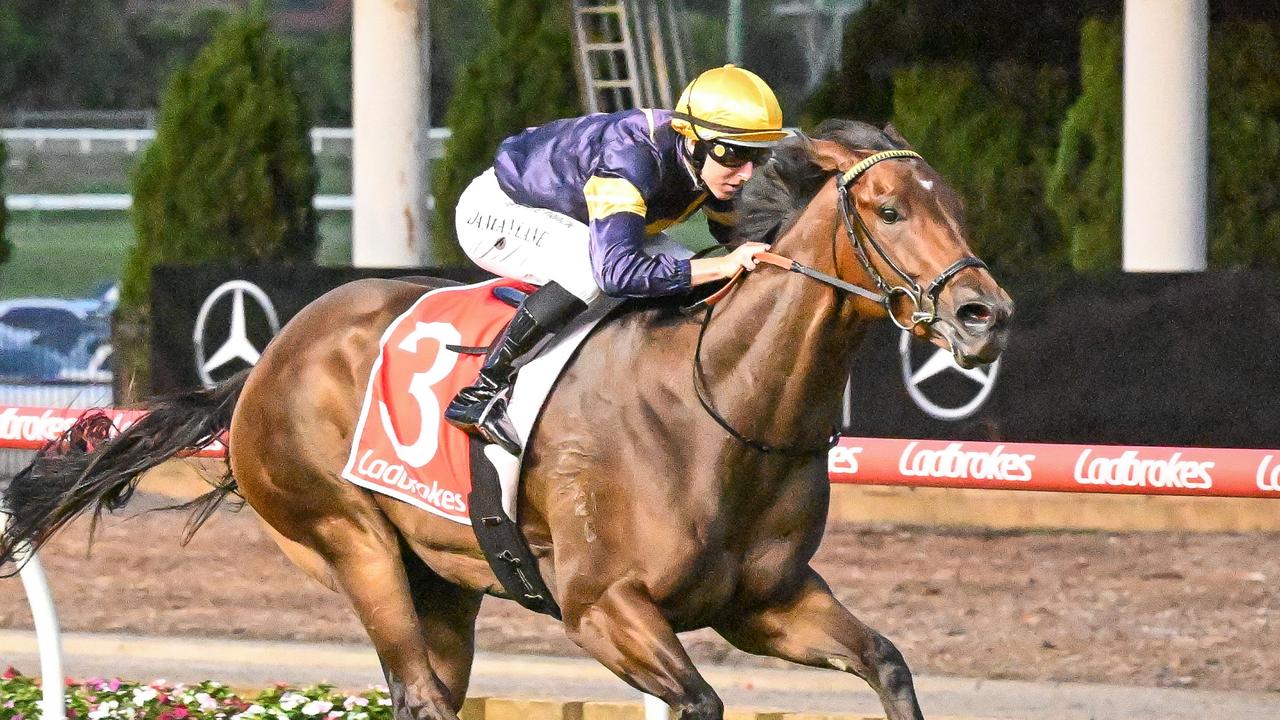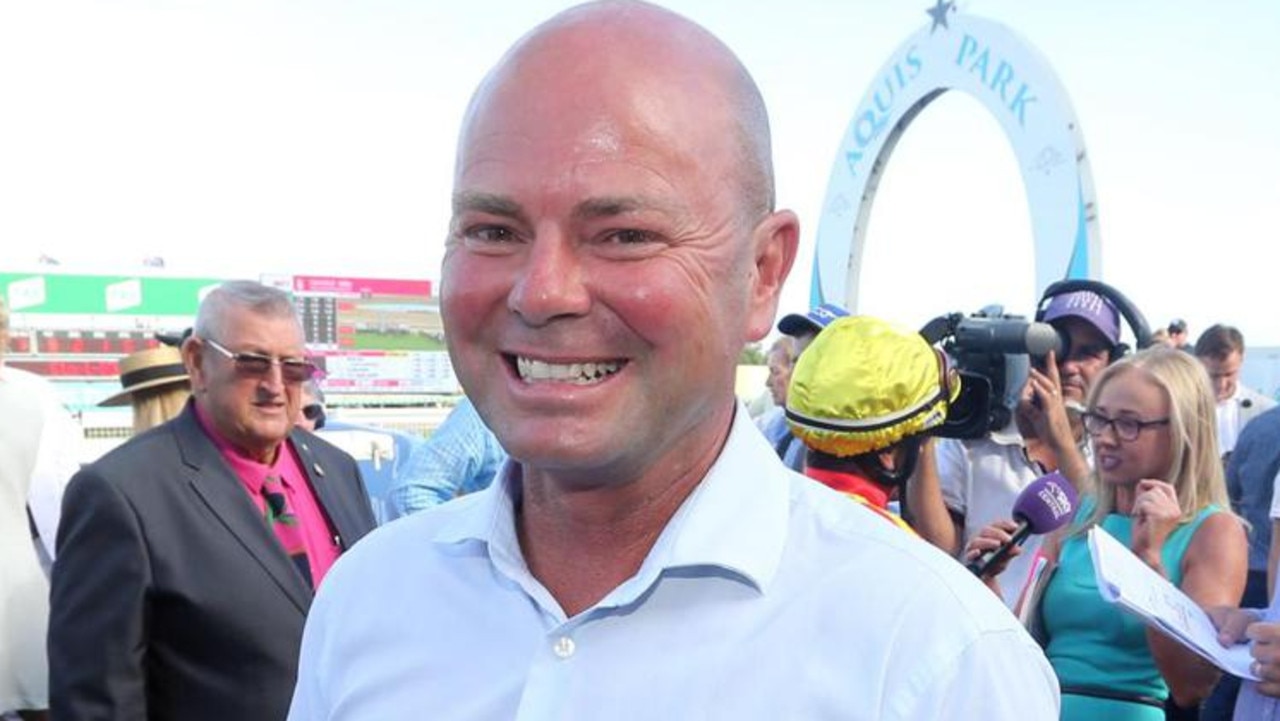How inaugural Hawkesbury stand-alone meeting in 2006 changed the racing landscape in NSW
Trainer Matthew Smith will never forget his win at the inaugural Hawkesbury stand-alone meeting. So much has changed in racing over that time as he returns for the 20th anniversary.

Horse Racing
Don't miss out on the headlines from Horse Racing. Followed categories will be added to My News.
A youthful Matthew Smith got on the scoreboard as a trainer at the inaugural Hawkesbury stand-alone meeting.
Hall of Fame jockey Jim Cassidy rode three winners, the late Guy Walter prepared Fighting Fund to win the Rowley Mile, trainer Paul Cave’s The Free Stater was an impressive Hawkesbury Guineas winner, and the great John Hawkes scored in the closer with Gumnuts.
It was 2006 and with the passing of time so much has changed in racing.
• PUNT LIKE A PRO: Become a Racenet iQ member and get expert tips – with fully transparent return on investment statistics – from Racenet’s team of professional punters at our Pro Tips section. SUBSCRIBE NOW!
There were only eight races at Hawkesbury that day and only one Listed race worth $100,000.
Cassidy has been retired for a decade and the other jockeys that won races at the stand-alone meeting are no longer riding.
There were two clubs in Sydney racing at that time, the Australian Jockey Club and Sydney Turf Club, and both were against giving up a Saturday race date to a provincial club.
And races like the $20m The Everest and $10m Golden Eagle weren’t even dreamt of.
But Smith remembers his win with Anden at that Hawkesbury meeting as if it was yesterday.
“I had not been training for that long and some owners from New Zealand called one day and said they were sending Anden over for me to train,’’ Smith said.
“Anden was a handy horse and I told the owners their horse was going well. They asked if they should come over for Hawkesbury and I told them I felt the horse would run a good race.
“Well, they all jumped on a plane and came over for Hawkesbury. They backed their horse, he got the money. It was unbelievable.’’
Smith, who has a strong team entered for Saturday’s meeting including Floating in the Group 3 $250,000 Hawkesbury Gold Cup (1600m), was taken aback when told this is 20th anniversary of the inaugural Hawkesbury stand-alone meeting.
“I didn’t realise it was that long ago,’’ Smith said.
“But I thought the idea of a stand-alone meeting was a great concept. I think most trainers are behind these stand-alone meetings.
“They work well and have become a necessity for the race clubs like Hawkesbury and others.’’
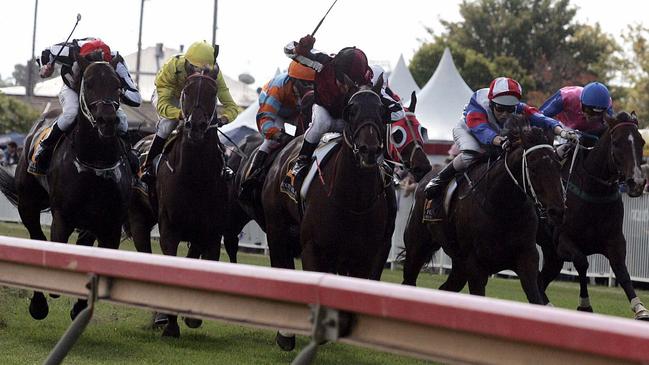
The Hawkesbury stand-alone meeting was the brainchild of former club chief executive Brian Fletcher who campaigned for years to be given an opportunity to have the Saturday race date.
“I really believed in the concept but I fought with the AJC and STC for four years to get it,’’ said Fletcher, the chief executive at Penrith Panthers these days.
“Then, I went to Peter V’landys at Racing NSW and a year later we started.’’
• What does the future hold for Godolphin’s two most prized assets?
They say imitation is the best form of flattery and Fletcher’s humble Hawkesbury idea has been copied by race clubs around the nation.
For example, in NSW, Hawkesbury is followed by stand-alones at Gosford and Scone in successive weeks.
“I thought it would work because you are dealing with a different audience on a Saturday,’’ Fletcher said.
“Out in the Hawkesbury district, they were starving for a good product and the meeting is packed out every year. The beauty is that other clubs like Gosford, Scone, Newcastle, Kembla Grange and now Wyong have made a success of this.’’
The Hawkesbury meeting on Saturday is an example of how much has changed since the first stand-alone meeting.
There are now 10 races on the program including three at Group 3 level with $250,000 prizemoney each (Hawkesbury Gold Cup, Guineas and Crown), one Listed race of $200,000 (Rush) and minimum race prizemoney of $120,000.
As the race meeting gained in popularity, the program has been improved with the Hawkesbury Gold Cup shifted from its traditional December date to replace the Rowley Mile at the stand-alone meeting.
The Hawkesbury Crown for fillies and mares, the Hawkesbury Gold Rush for sprinters and the Clarendon Stakes for two-year-olds have also been added to the stand-alone race day.
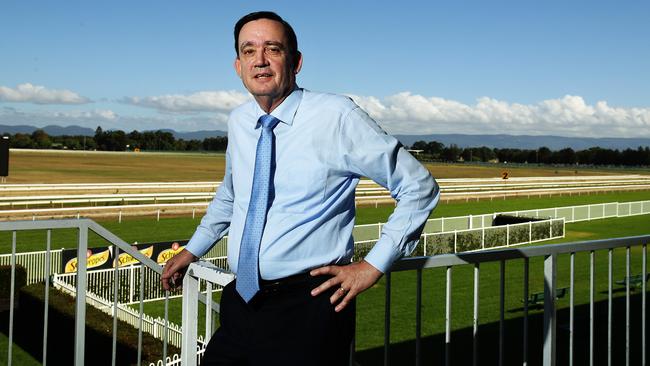
There are a bumper 156 entries across the 10 races with capacity fields for the four stakes races.
Hawkesbury Race Club chief executive James Heddo is presiding over his fourth stand-alone meeting and says the race day continues to grow in popularity.
“The fields are good and it is the second year the Hawkesbury Gold Cup is a Big Dance qualifier which helps,’’ Heddo said.
“This race meeting has paved the way for others but if you look back to 2006, it was a novel, controversial idea at the time.
“It was unheard of but full credit to Brian Fletcher and Peter V’landys for making this happen.’’
• ‘She is on target’: Filly stays home to press Qld Group 1 claims
The Hawkesbury stand-alone meeting has a habit of producing emerging Group 1 winners.
In the Hawkesbury Guineas last year, the John O’Shea-trained Schwarz showed his big-race potential with a dominant win and has subsequently trained on to win the Group 1 William Reid Stakes this season.
In 2023, Zardozi won the Clarendon Stakes for two-year-olds then later that year she won the Group 1 VRC Oaks.
She has been a multiple Group 1 placegetter since and ran fourth in the Caulfield and Melbourne Cups last spring.
The honour roll of Clarendon Stakes winners certainly deserves consideration for an upgrade with the likes of Zardozi and Zoustar (2013) training on to win at Group 1 level.
Arapaho ran only fourth in a Benchmark 78 at the Hawkesbury meeting in 2022 but he continued to improve with racing and has won twice at Group 1 level in the 2023 Tancred Stakes and Sydney Cup last month to take his career earnings over the $4m mark.
It was four years ago when Ellsberg was safely held in the Hawkesbury Guineas, finishing fourth behind Exoboom.
But later that year, Ellsberg dead-heated with Top Ranked in the Group 1 Epsom Handicap before winning the Five Diamonds.
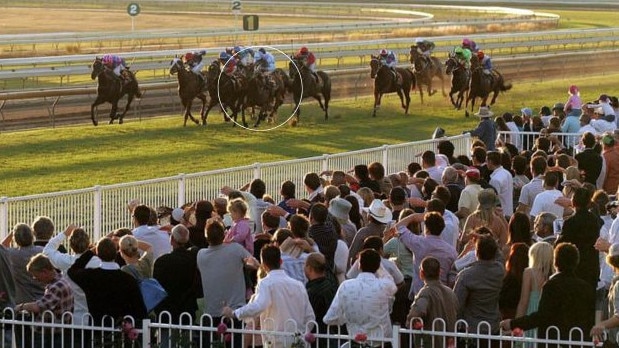
Shillelagh and Daysee Doom fought out the finish of the 2017 Hawkesbury Crown then both mares won Group 1 races later in their careers.
But Chautauqua, winner of the 2014 Hawkesbury Guineas, would have to be rated as the best horse to emerge from the stand-alone meeting.
The Team Hawkes-trained Chautauqua developed into a champion sprinter, winning six Group 1 races including three successive TJ Smith Stakes (2015-16-17) and Hong Kong’s Chairman’s Sprint Prize, earning nearly $9m prizemoney.
John Hawkes, the Hall of Famer who trains in partnership with his sons Michael and Wayne these days, is one of only two trainers who won at the inaugural Hawkesbury stand-alone and are returning with runners on Saturday.
The Hawkes stable has only Terrestar entered for the Hawkesbury Crown but the mare is only fifth emergency and likely to miss a start.
But Smith is returning with four runners – World Alliance (second emergency) and Astero are in the Listed $200,000 Hawkesbury XXXX Gold Rush (1100m), dual acceptor World Alliance is also entered for the Benchmark 78 Handicap (1100m), Pioneer Lass runs in the Blakes Marine Handicap (1800m) and Floating is in the Hawkesbury Gold Cup.
“Floating is going super, he is absolutely flying,’’ Smith said.
“If he doesn’t get too far back he will run a really good race
“I’m getting him ready for the Doomben Cup but he is working really, really well and the wet track will suit.
“Floating should run a very competitive race. I’m not saying he will win but it wouldn’t surprise me if he did because he’s working so well. He is in for a good preparation.’’
Originally published as How inaugural Hawkesbury stand-alone meeting in 2006 changed the racing landscape in NSW

